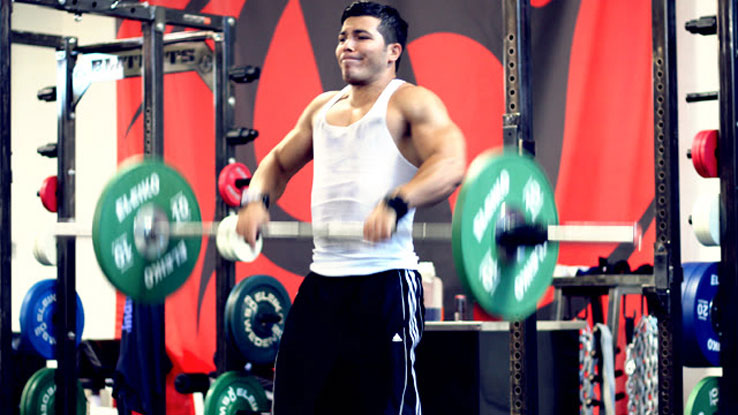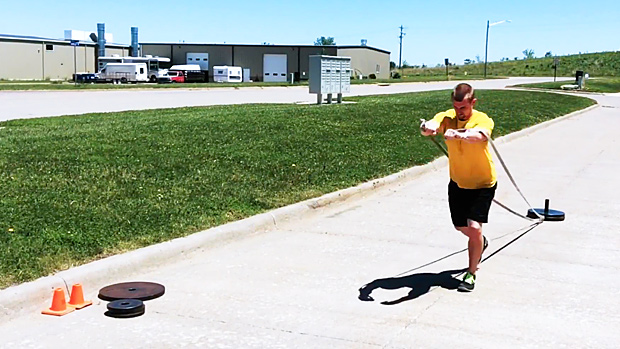"Find" More Reps
If you love training with balls-out intensity by taking a set to the limit, you know it's those last few reps that are key to stimulating growth. That's where strain, tension, and fatigue are produced at their highest levels.
This is why set-extending techniques exist: to further the work being done and to create a tremendous growth response. Lifters have made a lot of progress over the decades on routines that include such techniques like rest-pause, drop sets, and giant sets. Their purpose? To add more growth-inducing reps to the set.
The thing is, you have to do a lot of reps that lead up to that point, setting the stage for the point where strain, tension, and fatigue are eventually reached. After the initial set, you then apply something that extends it in some way to "find" more of those reps that create a growth response. Sometimes set-extending techniques mean that the total reps might be 25, 30, or even 50-plus.
This is a valid approach, but what if we can squeeze out the same intensity in fewer reps?
Enter Micro Drop Sets
A normal drop set is when you take a set to failure, then drop the weight by a significant amount and continue doing reps until you hit failure again. These can be done over and over again until you're basically toast. So you might do 14 reps to failure, drop the weight by a fair amount, do 7 reps to failure, then drop the weight again and do some variable amount of reps to failure.
With a micro drop set, the weight drop is very minimal and so are the amount of additional reps that can be done with it. So let's say you're doing barbell curls and you're using 90 pounds. You hit 12 reps with it, where a 13th rep would not be possible in good form. From there, you immediately drop to 80 pounds and crank out as many reps as you can is good form.
However, because the weight drop is fairly insignificant (10 pounds) and due to fatigue, you might only get 2 reps, possibly 3. You could do one more micro-drop with 75 pounds and crank out one more growth-inducing rep. Now you're looking at 3-4 heavy, growth stimulating reps in a very short span instead of the set dragging on and on as with traditional drop sets.
Where Should I Use Micro-Drops?

These should be applied mostly to movements that are machine based or for smaller single-joint exercises. Now, you CAN apply this method to big, multi-joint movements, but it would be wise to avoid this technique with any exercise where low back stabilization can be compromised (squats, various deadlifts, barbell rows, etc.). For big movements where low back stability isn't an issue, like leg presses or hack squats, you'll be fine.
Can This Be Used for Pure Strength?
Yes. Don't dismiss micro drop sets as only a "taken to failure" set-extending technique. You can easily fit this in with a strength program where you leave a few reps in the tank for your big movements. You can do your set with a few reps left in the tank, perform the micro drop, and then do another 2 reps in good form.
In this scenario, squats and deadlifts can be put back on the agenda while keeping low back stability in check. Remember, it's all about the application of the technique in regards to your training goal.
How Many Drops Should I Do?
That can be something you play with. For smaller movements that don't cause a huge curve in recovery debt, you can do 3 or 4. That gives you 6-8 extra reps that offer an enormous amount of tension and growth potential.
For any big compound movement that's being taken to failure, do 2 at the most, but 1 micro-drop will also work very well. Again, the reason for limiting it on big movements is to be mindful of the systemic recovery curve.
How Much Weight Should I Use?
The amount of weight you're going to use will vary depending on how strong you are and the movement you're doing. If you're doing leg presses with 800 pounds and you do an all-out set, then dropping to 750 pounds will be about right. But with curls, a mere 5-10 pound drop would be all that's needed. Just choose a weight where you can only get 1-3 additional reps after the drop. If you can drop the weight and crank out 10 more reps then that wasn't a "micro" drop, dummy.
How Do I Set This Up?
- You can have a spotter on each side of the bar and have them take the weight off. This will limit the rest time between the initial set and the drop(s).
- If it's a machine and you're training alone, just drop the weight down one pin and resume the set.
- You can also use pre-loaded barbells or have dumbbells lined up and ready to rock.
Depending on these factors, you could end up with a slight rest-pause built in to the set as well, which is perfectly fine.
How Many Reps Should I Be Able to Do?
If you're getting 4 reps or more after a drop, then the drop in weight was too much. What we're looking for here is the addition of around 2 reps on the drop, with the most being 3. These reps should be done in very strict, pristine form to get the most out of it. If you go into cheater mode and start slinging the weights all over the place then you're losing the maximum benefit of the technique by distributing tension in areas you're not trying to target.
Apply and Grow
Experiment with this technique on some small movements first to get an idea of your weight drops, then pick a big movement to experiment with. This is also an excellent technique to implement with body parts that are lagging or stubborn while you put your strong areas into more of maintenance mode.





